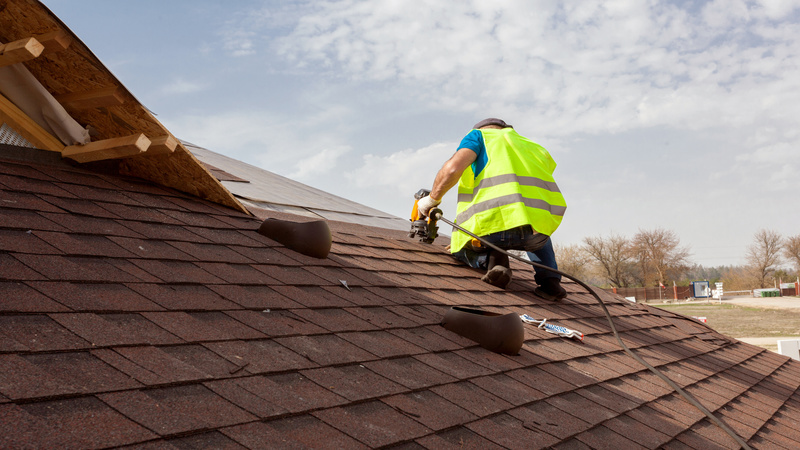With all the different types of buildings you see, there are really only two basic roofing types: low slope and steep slope roofing systems. The low slope roof is usually seen on commercial buildings and the steep slope systems are seen on residential buildings.
Low Slope
Even though low slope is the design, there are many types of low slope roofs and materials from which they are constructed. With a membrane system, the roof is coated with a waterproofing agent and a coating that will allow “traffic” on the roof and protect it from damage from the people and equipment during service and repairs.
Within this membrane system are different roofing types. Some of the more common types are BUR or Built Up Roof, TPO or Thermoplastic Polyolefin, EPDM or Ethylene Propylene Diene Monomer and Metal Panel Roofing. Each has its own set of advantages and disadvantages. Commercial business owners should consider carefully the environment and weather conditions at the building location before choosing a roof.
Steep Slope
Most commonly found on residential buildings, steep slope roofs are usually categorized in one of these categories: asphalt shingles, tile, metal, slate or wood shakes. Each part of a steep sloped roof has a significant part in creating what is known as the “fifth wall” of a home. Those parts are:
• The decking: Critical in providing wind and storm protection, the decking is a wood sheathing attached to the rafters of a home.
• The underlayment: Works as an additional water barrier for the shingles, tiles, slate or shakes.
• Eave starter shingles: These shingles or starter strips improve wind resistance. They are your roof’s best friend when a storm comes through.
• Flashing: This element is installed if the roof has a change in slope, where two slopes come together, where a chimney or dormer is present or where a skylight is installed.
• Boots: Boots are the seals that are applied around pipes that come through the roof. These also protect against water, wind and other weather related damage.
• Roof covering: The final layer of the roofing system: No matter what roofing types buildings have, this outer layer provides weather protection for the roof and the entire structure.



